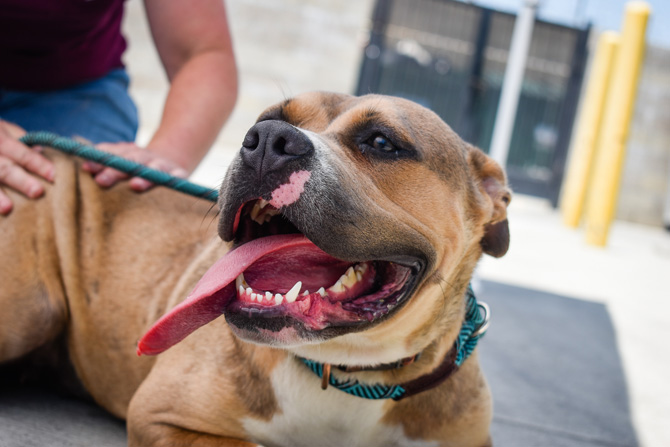Ever stopped to consider what would happen to your beloved fur pal in an emergency? This is where an emergency pet plan comes into play…
Sure, it’s one thing to know how to recognise a pet emergency but it’s an entirely different matter to know how to take care of your pet in an emergency situation.
What better time to ponder these things than now. Why? Well, because June is National Pet Preparedness Month. Pet parents are encouraged to consider how they would take care of their pet in the case of an emergency or natural disaster.
So, what exactly does an emergency pet plan entail?
In the same way that you have a bushfire plan (you do have one, right?), an emergency pet plan details the actions you need to take and important information to help keep your fur pal safe.
Typically, your plan should include policies, documents and contact numbers. It’s the sort of information that’s essential and that you don’t want to be digging around trying to find in an emergency. (Think: fire, floods, hurricane, act of terrorism… You get the gist?)
Without a doubt, setting up an emergency pet plan can be a little overwhelming. This is why we’ve created a simple checklist.
Things to do in preparation
As loving pet parents, our fur babies are our responsibility. As such, it is our job to prepare for emergency situations. Taking action early on is an essential way to protect the safety and welfare of your furry friend. Here are five important actions to take.
1. Check microchip and ID
Microchip identification and collar tags are two super important ways to ensure you and your fur pal are reunited, should you become separated.
But what if your contact details are out of date? Well, that makes the whole job a lot harder and reduces your chances of a soppy (and quick) reunion.
Make certain your contact details are kept up to date by setting an annual reminder on your phone. If there are no changes, then great—sit back and relax until next year’s reminder.
2. Gather important documents
It is so much easier to locate important documents when you’re thinking clearly and not in the midst of a major emergency. Do you see where we’re going with this?
Don’t wait until disaster strikes to think about gathering important documents that will help keep your pet safe. Wondering what documents we’re talking about? Here are a few to consider:
Insurance policy (in case your pet gets injured and you need to make a claim on your pet insurance)
- Your pet’s medical/vaccination records
- Photo of your pet in case you get separated
- Address of alternative safe places to stay
3. Keep essential phone numbers together
You might decide to add important pet-related phone numbers into your phone’s contact list or job them down on paper. We’d recommend doing both—just in case you happen to lose your phone! Important numbers to have at hand include:
- Your local vet
- Local animal shelter (in case you need temporary accommodation for your pet)
- A friend or relative that may be able to offer you and your fur pal a temporary safe home
4. Consider relocating your pet
In some emergency situations, you may have forewarning. In this instance, your plan might involve relocating your pet to help keep him or her out of harm’s way.
Have a think about who you might call upon to take care of your pet. Contact the person and ask if they’re happy to be part of your emergency pet plan. If an emergency does occur, you’ve already done the groundwork. You can rest assured you’re pet will be safe, well cared for—and one less worry for you!
5. Put together a pet emergency kit
Again, you don’t want to find yourself rushing around trying to put together a kit for your pet at short notice. The best option is to pre-pack a pet emergency kit, so it’s ready to grab at the drop of a hat.
What should I put in a pet emergency kit?
A pet emergency kit should contain the basic items your pet needs to stay safe and well. Here’s a list of key things to include in your kit.
- A seven-day supply of food (plus can opener, if needed)
- Fresh water for up to two weeks
- Food/water bowls
- Medication for your pet
- Pet carrier or leash
- Pet bedding/blanket
- Grooming tools (A brush in fine)
- Sanitation products (i.e. poop bags, kitty litter)
- Pet first aid kit
No one likes to think about worst-case scenarios, but if pets are part of your home it’s essential to include them in your emergency planning.
Happy Pet Preparedness Month!
Image source: Cierra Voelkl on Unsplash







Leave A Comment